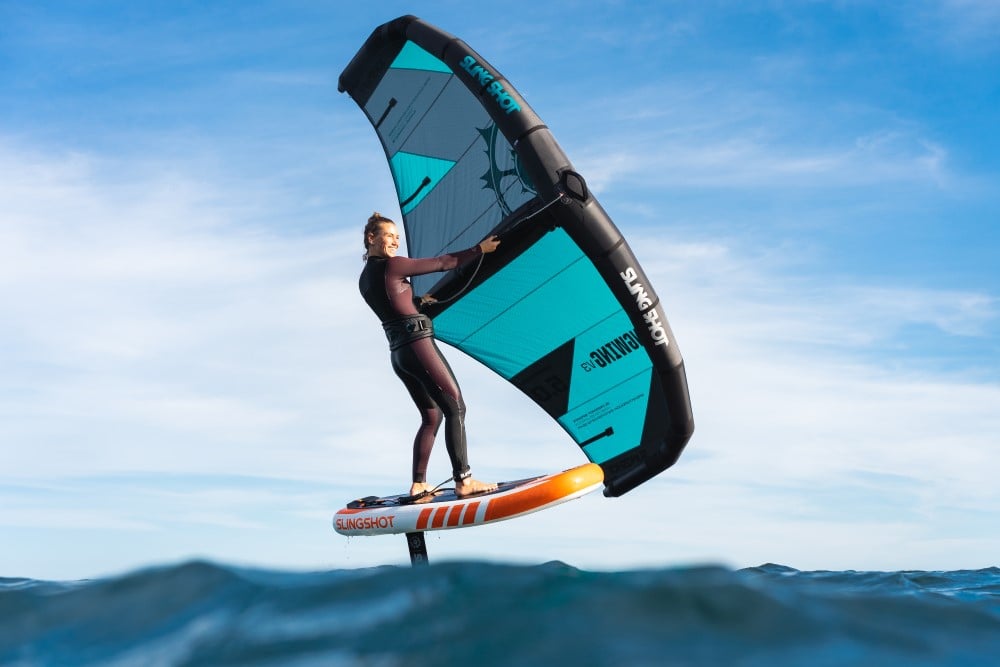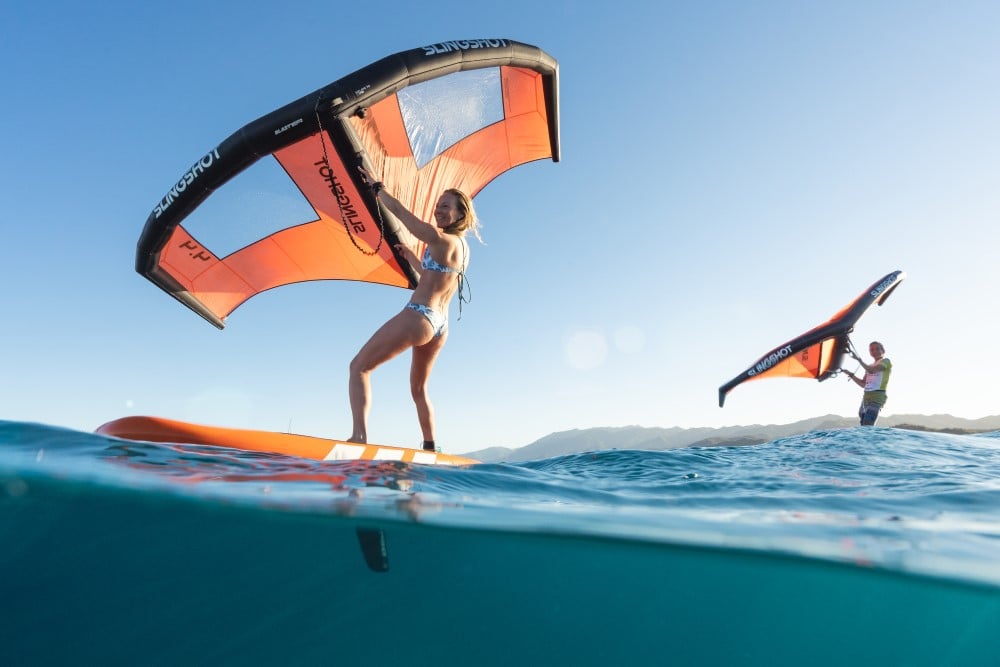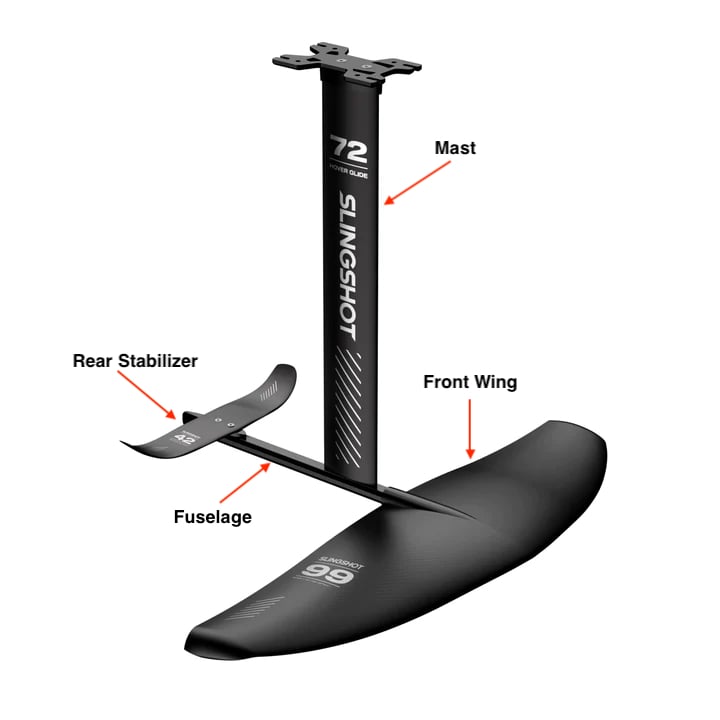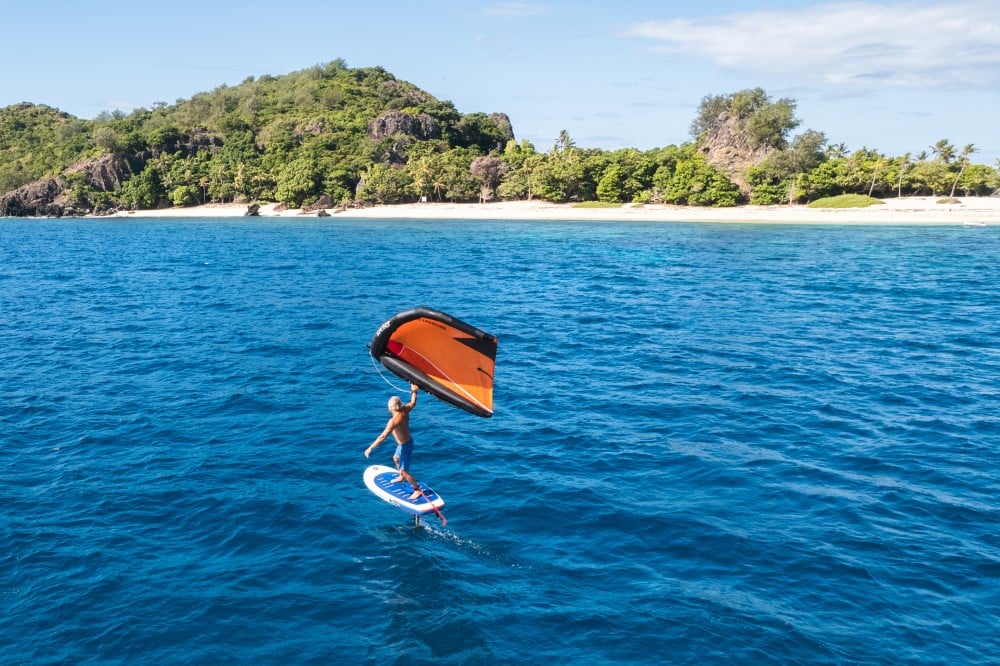What is Wing Foiling & How To Get Started Winging
What is Winging and Wing Foiling?
Both sports involve the participant standing on a large, stable board and holding in both hands a lightweight, inflatable “wing” to harness the wind’s energy, powering an effortless ride on a body of water like a lake, sea, or ocean. Slingshot co-founder Tony Logos created the first inflatable handheld wings in the early 2010s. The same inflatable wing is used for both winging and wing foiling. The main difference is that for winging, you stand on a SUP-style board, while for wing foiling, you’re on a smaller board with a hydrofoil mounted to the bottom, which allows the board to glide above the water magically. While both sports can be enjoyed by anyone looking for a way to be on the water and experience the beautiful thrill of wind power, wing foiling is more advanced than winging due to the additional challenge of controlling the hydrofoil.
What Kind of Gear Do You Need?
While most wind sports involve a complicated mix of equipment, winging and wing foiling require a surprisingly small amount of gear. In fact, for winging, all your necessary equipment can easily fit in the trunk of your car.Winging
SUP-style boardAny size or style will do, though the bigger the SUP, the more stable you’ll be.
Inflatable wing
Wings come in several sizes (measured in square meters), usually from 2.5 up to 7.5 meters. The lighter the wind, the larger the wing that is needed.
Pump
A manual, dual-handled pump is used to inflate both your SUP and your wing.
Wrist and leg leashes
These keep you safely tethered to the board (leg leash) and the wing (wrist leash). We wouldn’t want them flying or floating away, now would we!
Floatation vest
The added buoyancy from a flotation vest will assist when you’re in the water and preparing to start.
Helmet
Although hard impacts into the water are usually minimal while winging, it’s always nice to have your head protected from a wayward board while learning.
Wing Foiling
More specialized equipment will be needed for wing foiling, but most of the equipment used in winging (wing, pump, leashes, helmet, and floatation vest) can also be used in wing foiling. So you'll need two additional pieces of equipment:Wing Foil Board
A large, stable board with a specific hydrofoil mount built in. They come in a variety of sizes, as well as in either hard-sided surfboard-style models or travel-friendly inflatable options. The larger sizes of these boards can also be used as a SUP, so you can still get out on the water and paddle even if there’s no wind.
Hydrofoil
This is what makes the “magic carpet ride” happen. Consisting of a mast, front wing, fuselage, and rear stabilizer, a hydrofoil setup is available as a package (for simplicity) or piece by piece (for more advanced customization). Although a hydrofoil looks complicated and cumbersome, it’s quick and easy to attach to the wing foil board’s bottom in minutes.
Where Can You Go Winging and Wing Foiling?
Short answer: anywhere that has a body of water and some wind! Yes, there are several “hot spots” in the US for winging and wing foiling in coastal states such as North Carolina, California, Oregon, Texas, and Florida (plus the islands of Hawaii and Puerto Rico, of course), but you can also go winging and wing foiling at any lake or reservoir no matter how far from an ocean or sea. From Nebraska to Michigan to Nevada, all you need is a little wind, and off you go!How To Get Started Winging?
Winging is the best place to start as the easier of the two sports. And then, once you’re comfortably winging, you can safely and confidently try out wing foiling. Although a lesson or two is undoubtedly helpful, it’s not required to start winging. However, wing foiling does require specialized instruction to start due to the more complex nature of the hydrofoil, and we recommend you seek out a certified instructor or school for an introductory course. An excellent online resource to begin your winging or wing foiling journey is the Foil Academy. This free resource provides several hours of video instruction explaining how the wind works with the wing, how to prepare your equipment, how to ride, how a hydrofoil works, and how to maneuver the wing.
When did wing foiling start? / Who invented wing foiling?
The origin story of modern wing foiling starts with Slingshot co-founder Tony Logosz, who is credited with developing the first handheld inflatable wings in 2011, 7 years before they became commercially available.What size wing do I need?
Wings come in a size range of 2.5 meter to 7.5 meter. Although there is no absolute rule (due to rider weight, ability, wind conditions, etc.), most average-sized riders will likely utilize a wing in the middle of the range (4.5m or 5.5.m) in moderate winds and use a smaller or larger-sized wing for when the wind is extra strong or light.What type of board do I need?
There are several different types of boards you can use for winging and wing foiling. To get started in winging, you can use a SUP board - especially one with a keel that allows you to tack upwind easily. Once you have the basics down, you can get up to speed with a classic wing foiling board. A third option is an inflatable wing foiling board. These are great for travel since they pack down to fit in a car trunk or airline luggage.What size foil do I need?
The size of foil you need depends on your ability and riding style. Generally speaking, larger wings provide greater stability, glide, and support for low-speed takeoffs, while smaller wings provide better speed and agility.
How much wind do I need to wing/wing foil?
You can wing in as little as five knots of wind if you have a larger-sized wing. Basically, if there’s wind, you can wing!How fast do you go when winging/wing foiling?
Your speed depends on the wind speed and the size of the wing, board, and foil you’re on. If you sized your setup correctly, you could go very slow even in strong winds and very fast even in light winds.What's the difference between wing foiling and wind foiling?
Wing foiling uses an inflatable handheld wing to harness the wind’s energy, while wind foiling uses a windsurf sail to harness the wind’s energy.Is wing foiling harder than kitesurfing? Is winging easier than windsurfing?
All three watersports have unique learning curves and required equipment. However, in general, wing foiling is less equipment intensive than kitesurfing or windsurfing, and winging (no foil) is easier to get started.
Learn More With Our Other Wake Guides:
Wakeboard Size Chart & How to Choose
Wakeboard Boots & Bindings - How to Choose
Wakeboard & Binding Compatibility Guide
Wakeboard Tow Speed, Rope Length & Boat Weight
Wakeboard Life Jacket & Vest Size Guide
Wakeboard Ropes & Handles - How to Choose
How to Wakeboard: Beginner Tips & Getting Started



